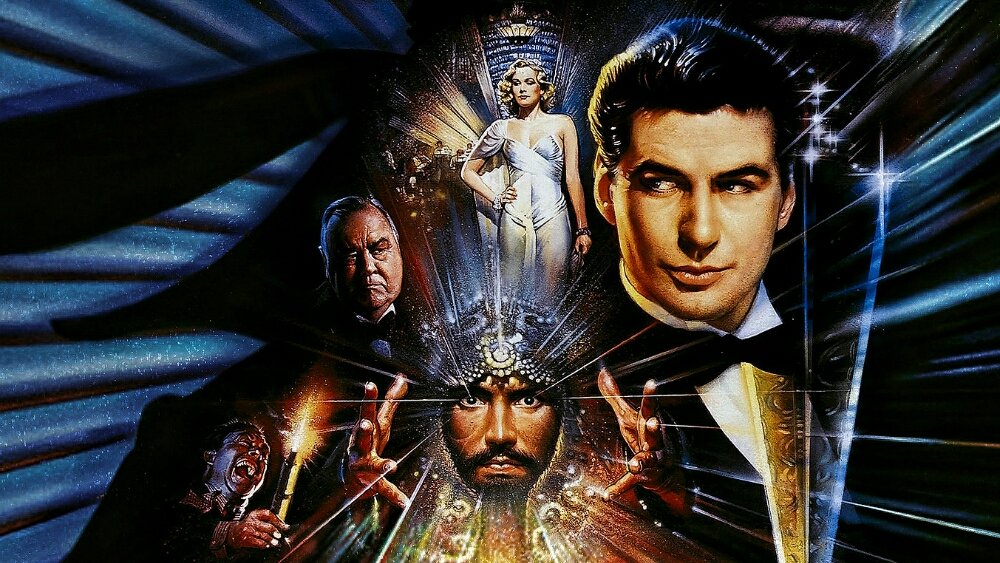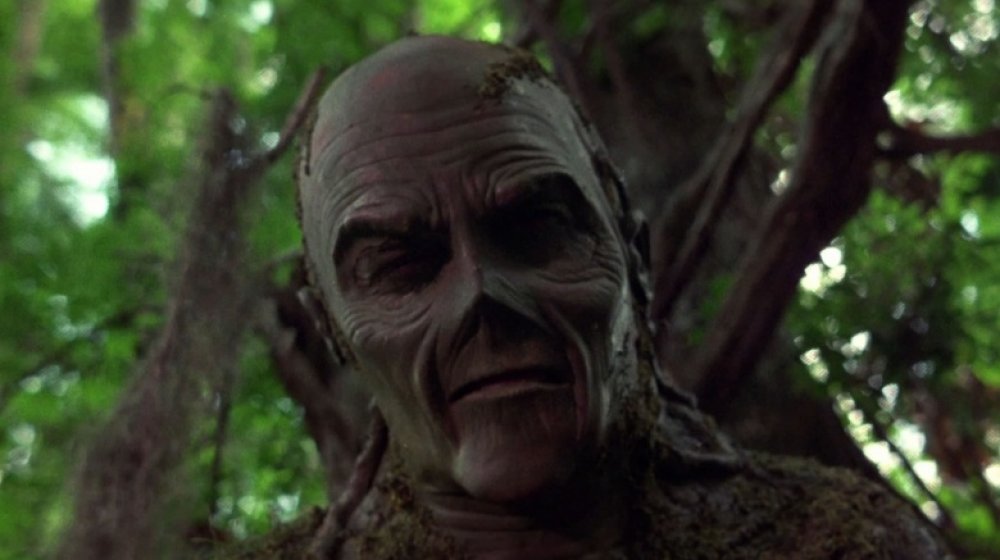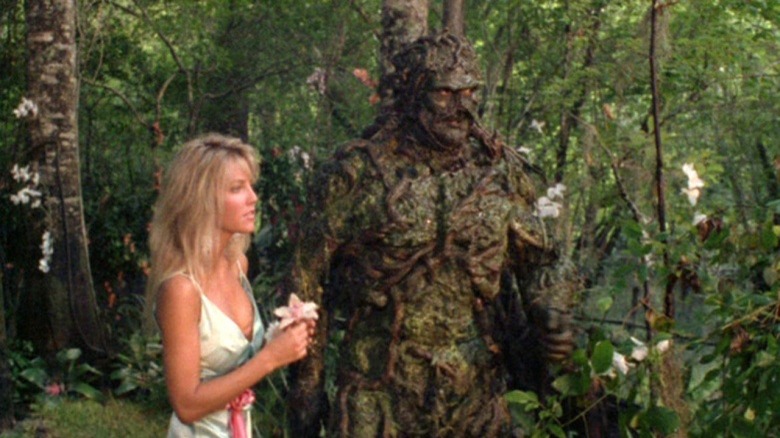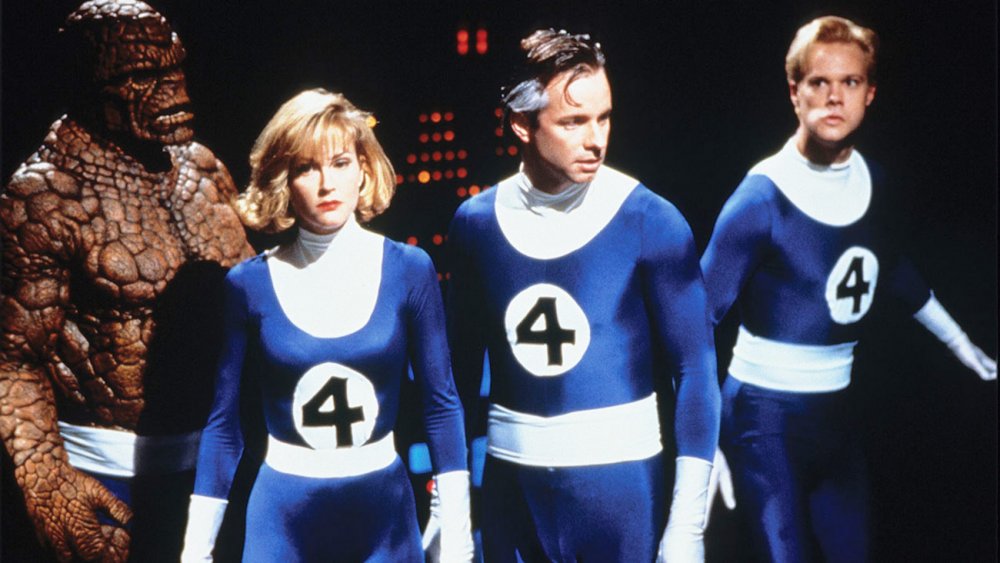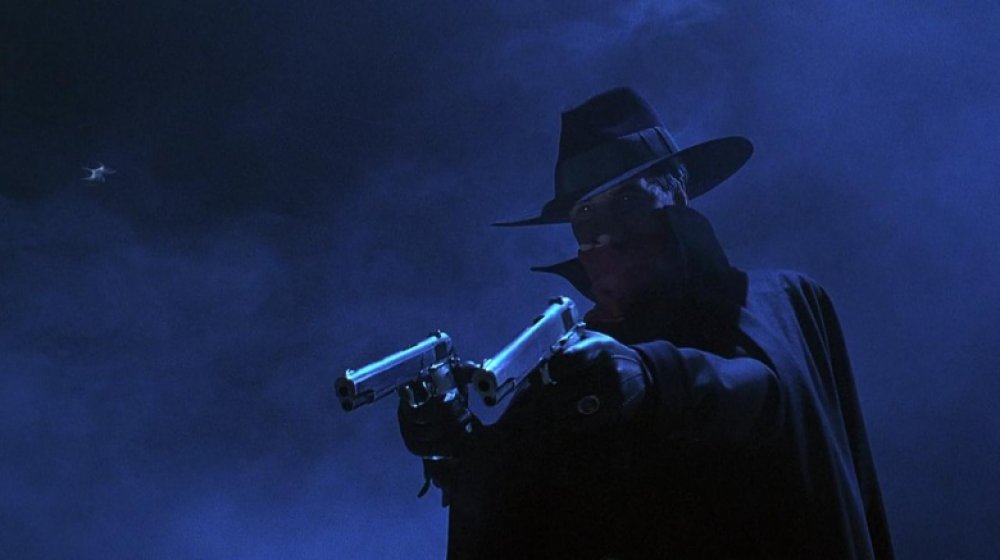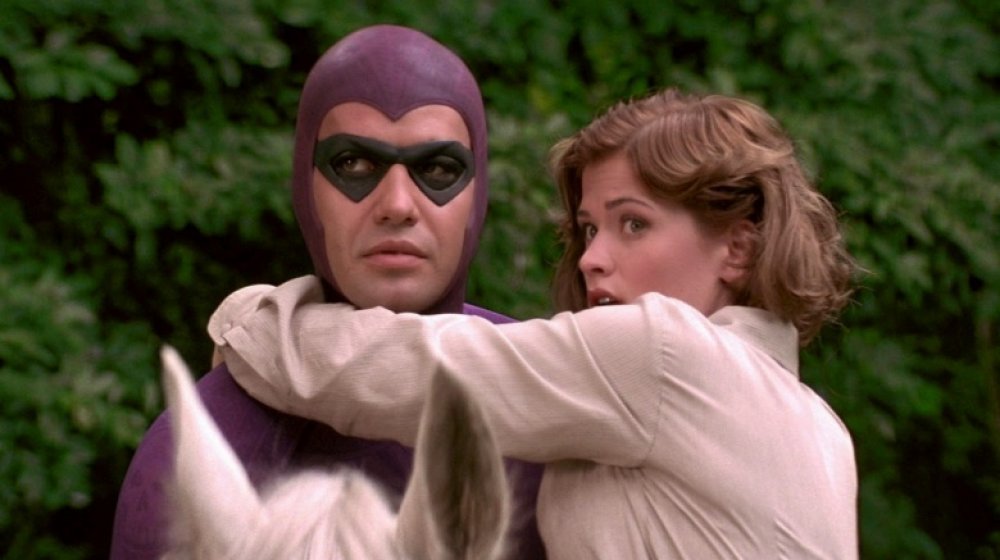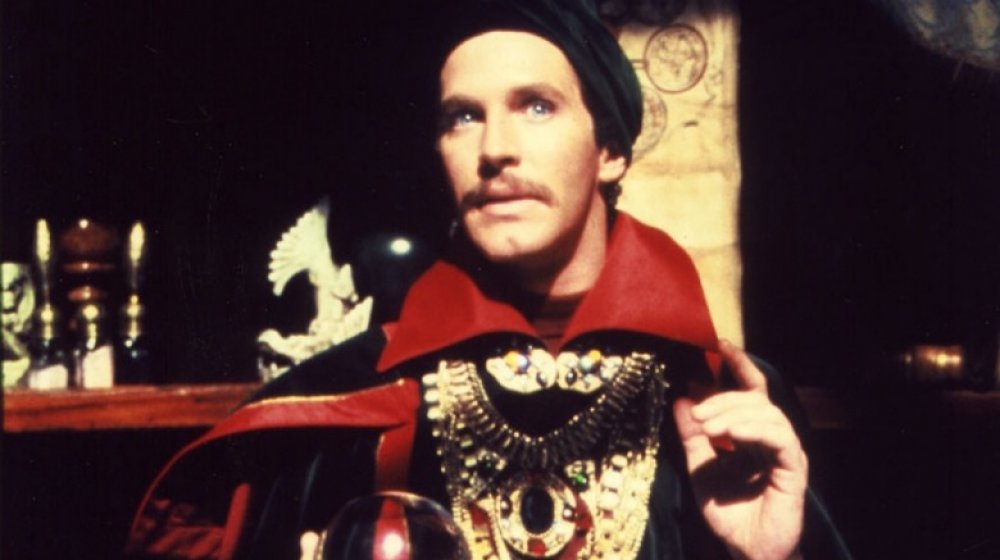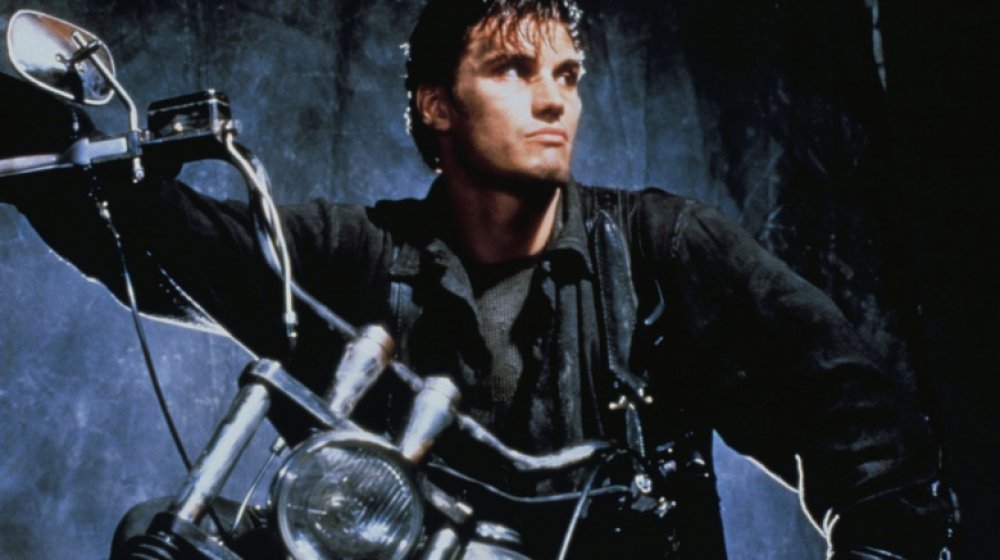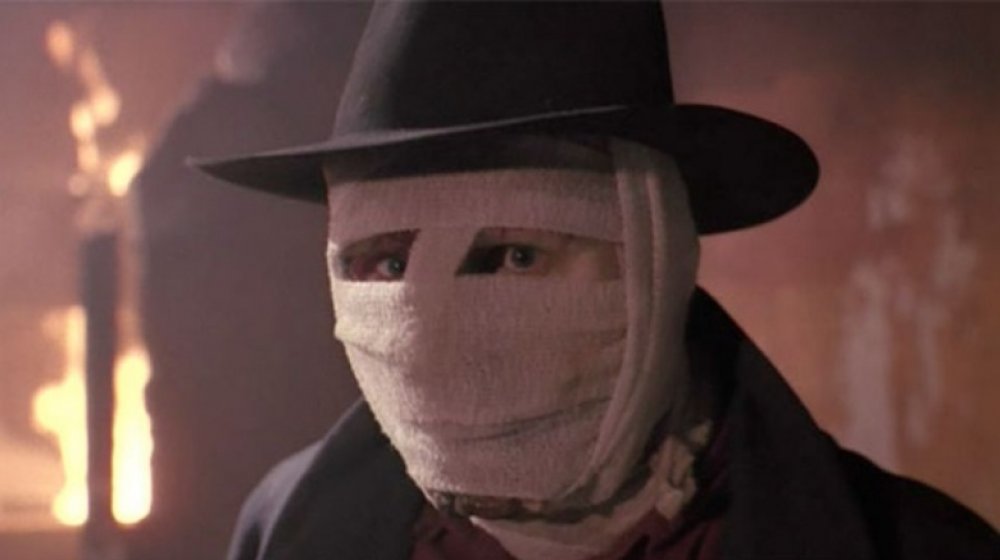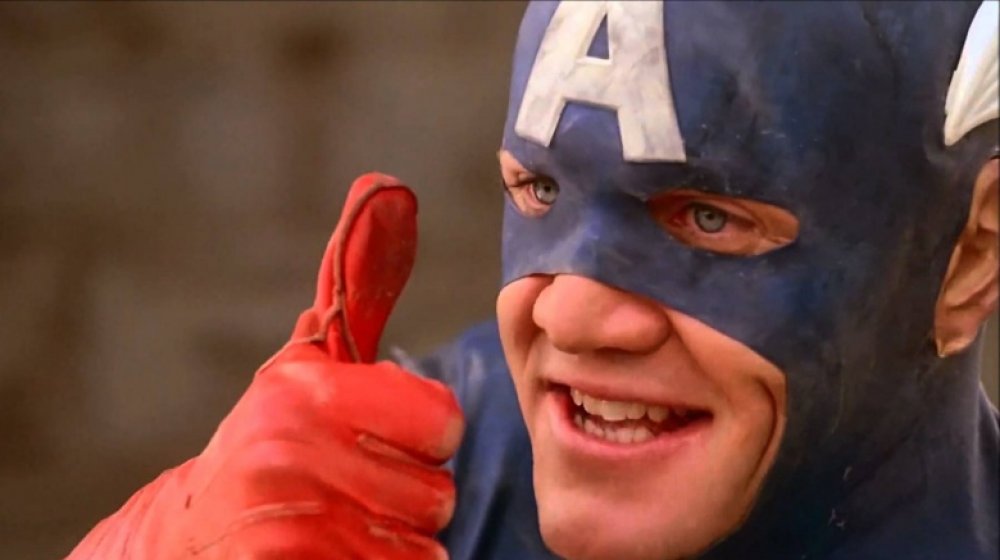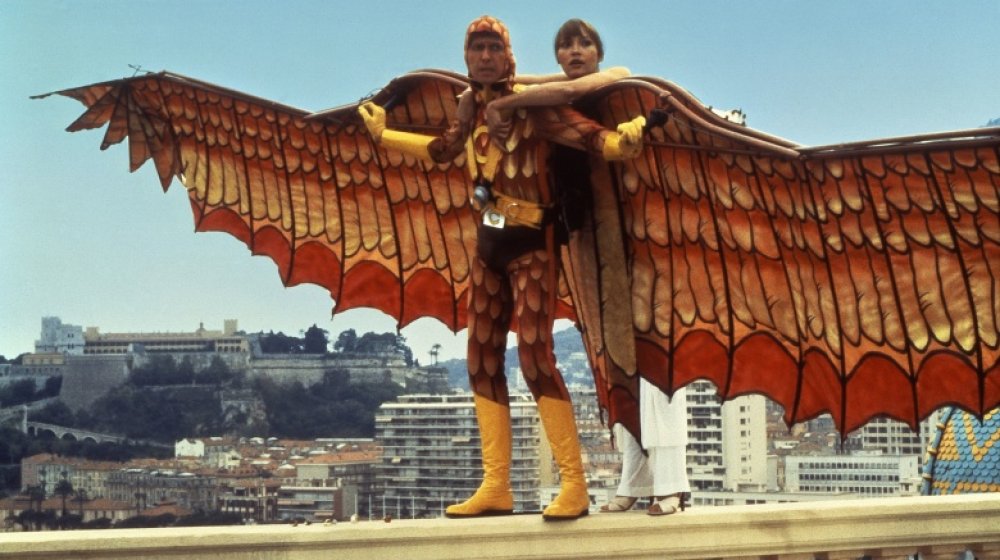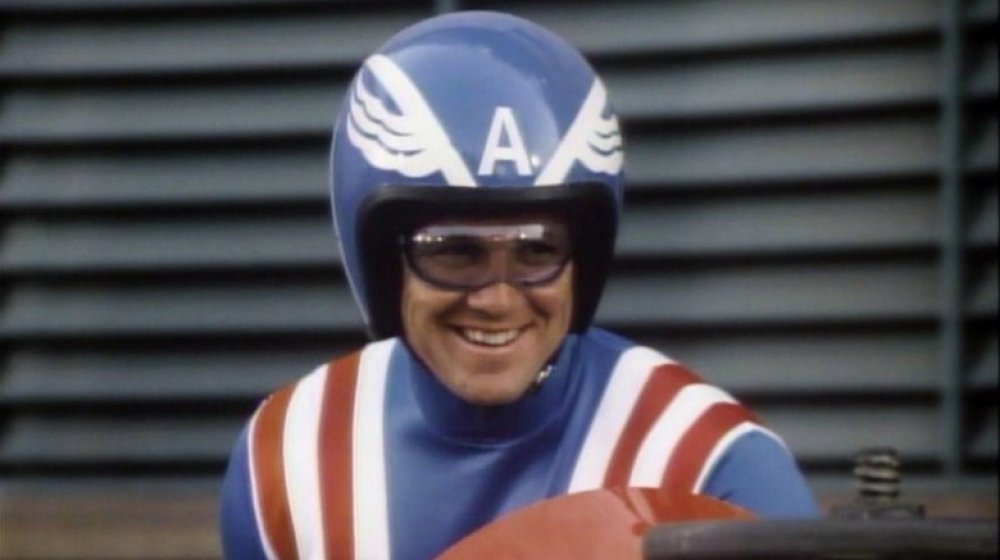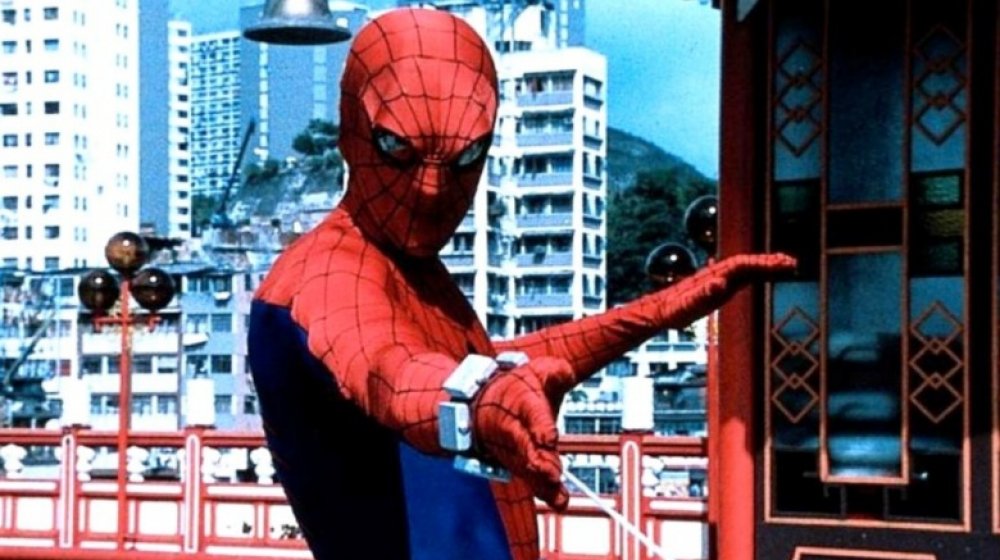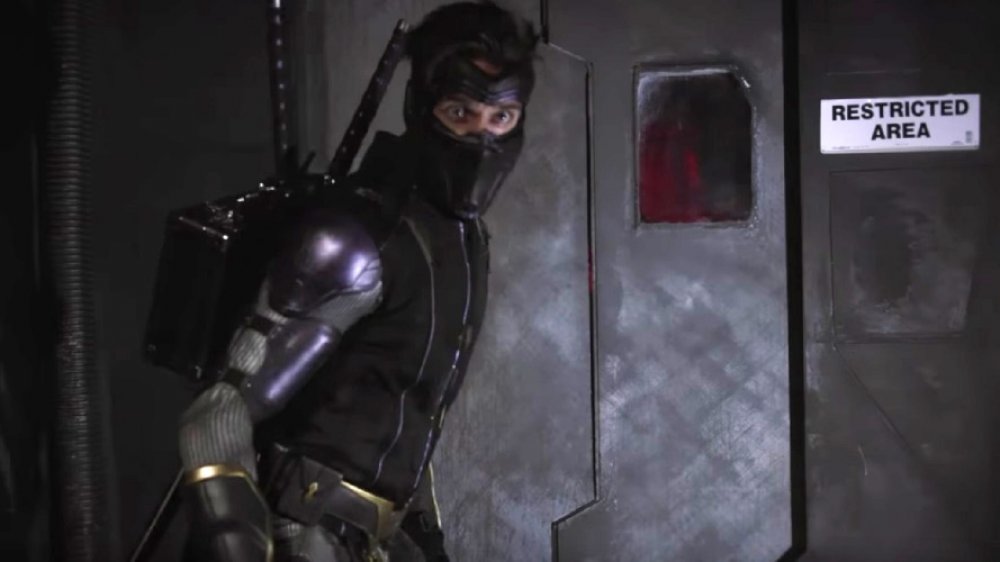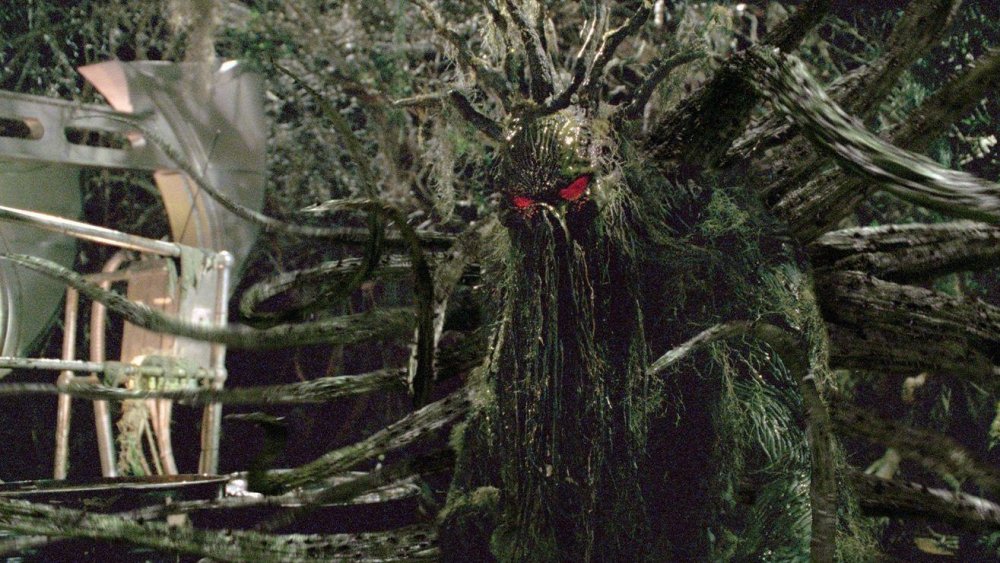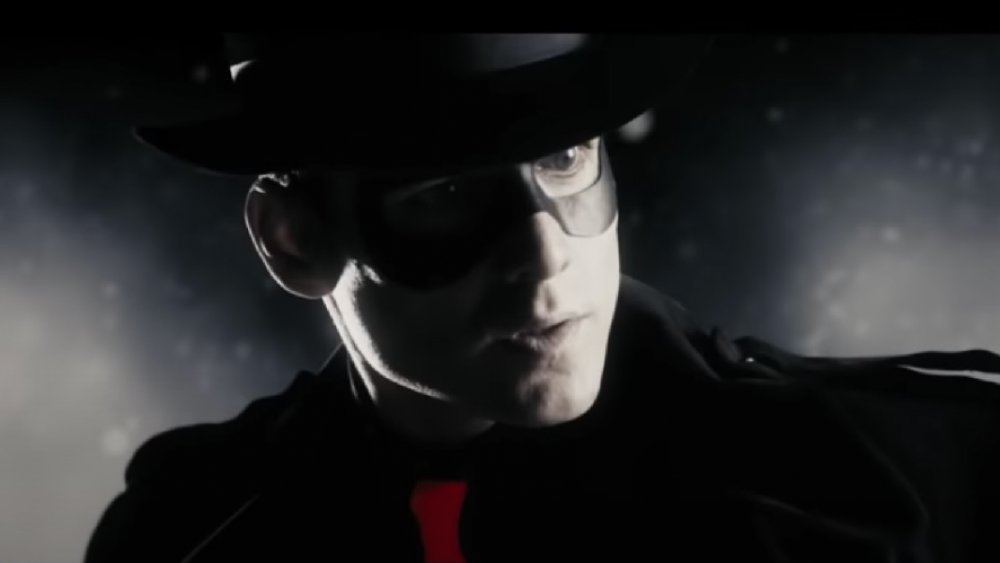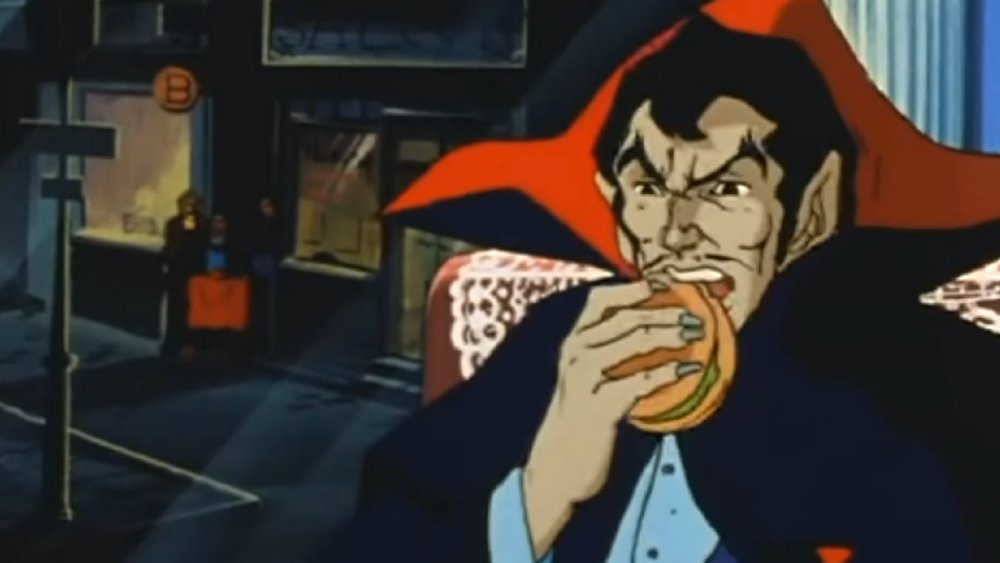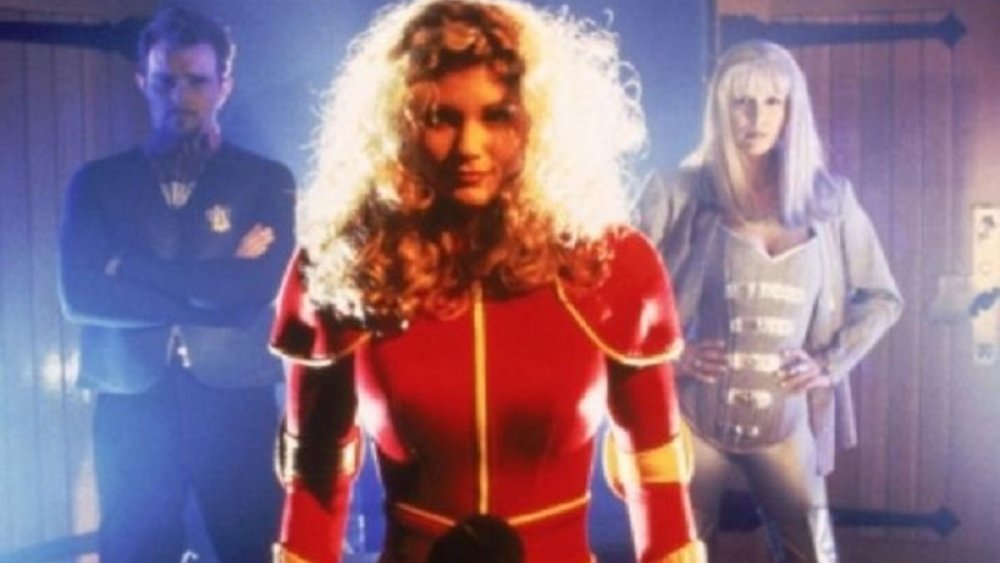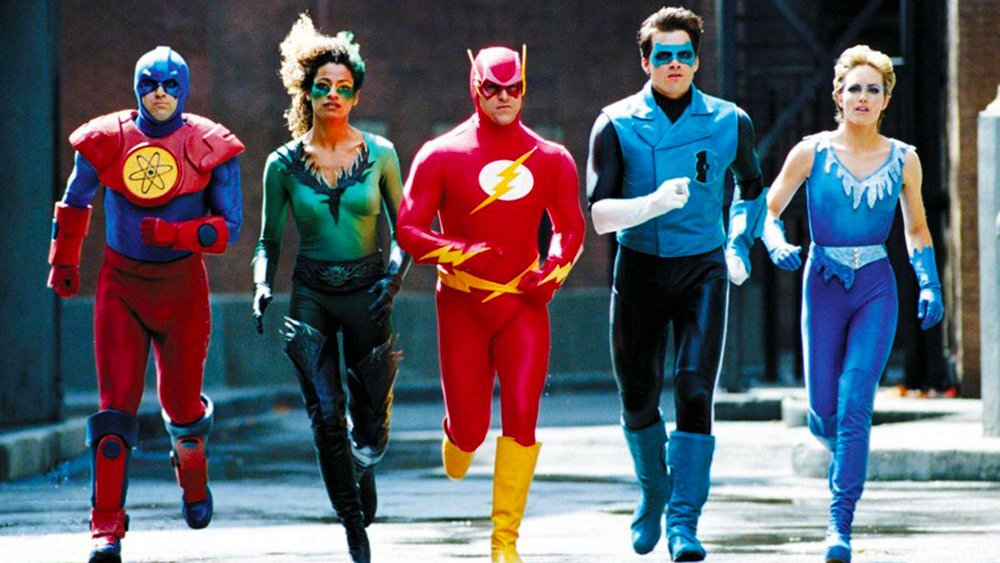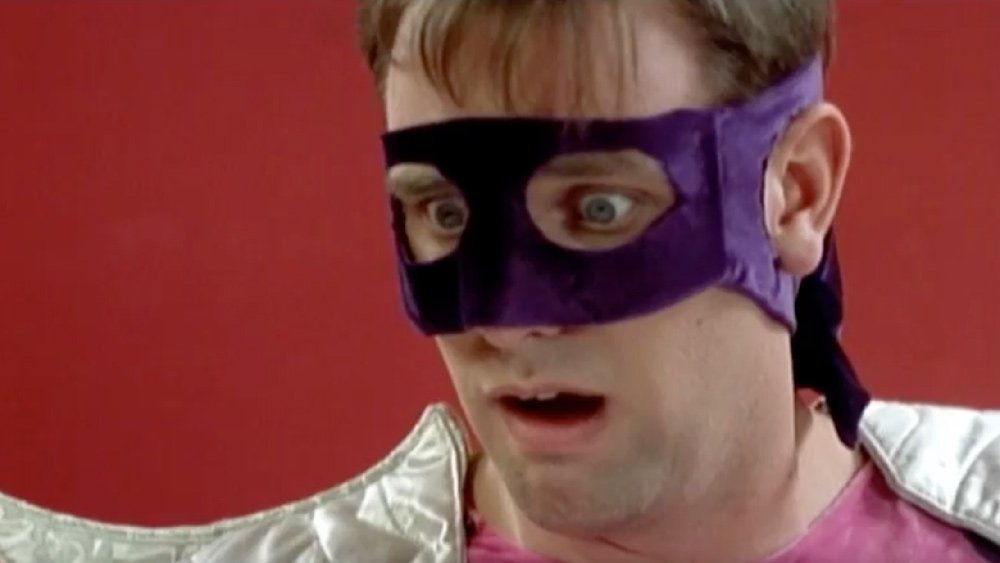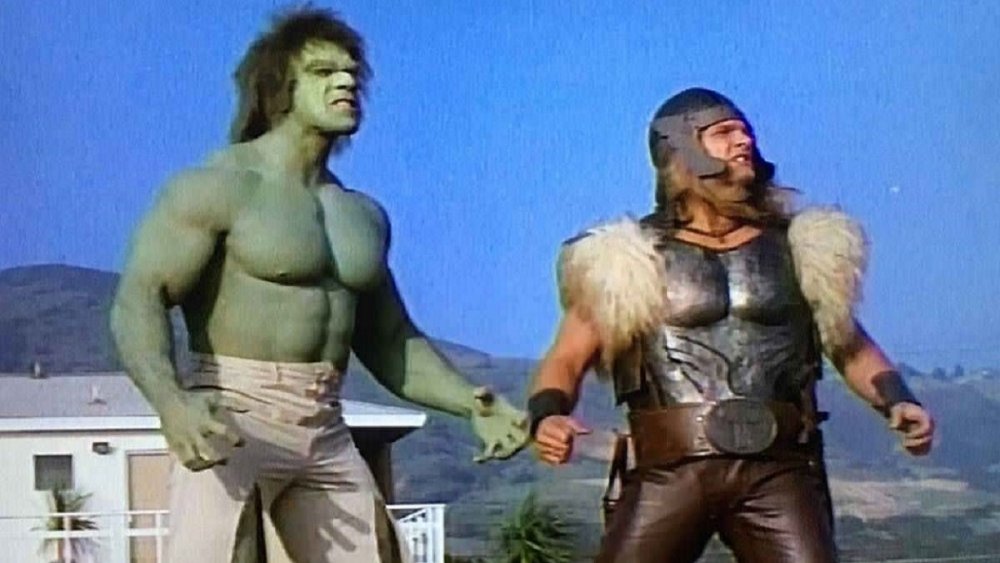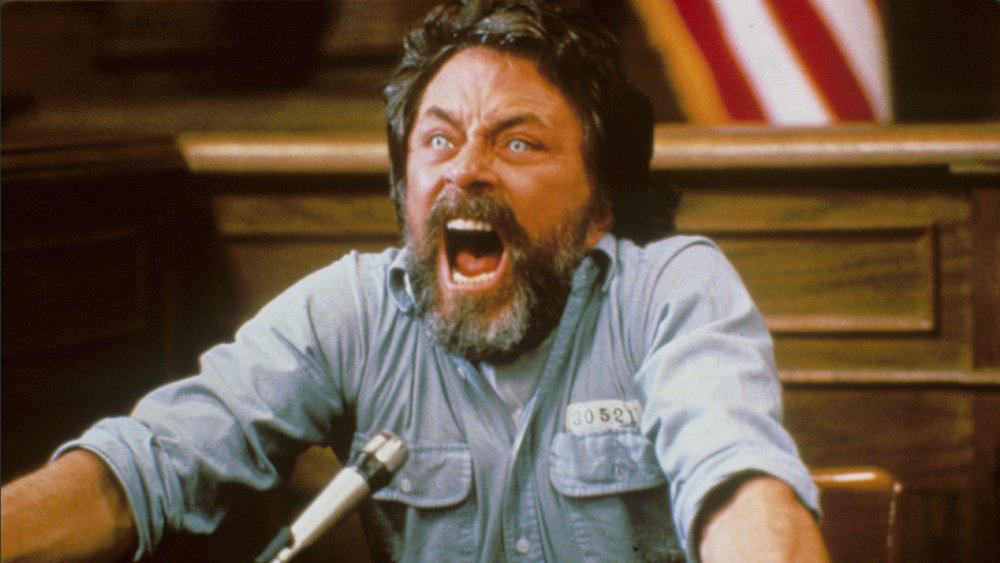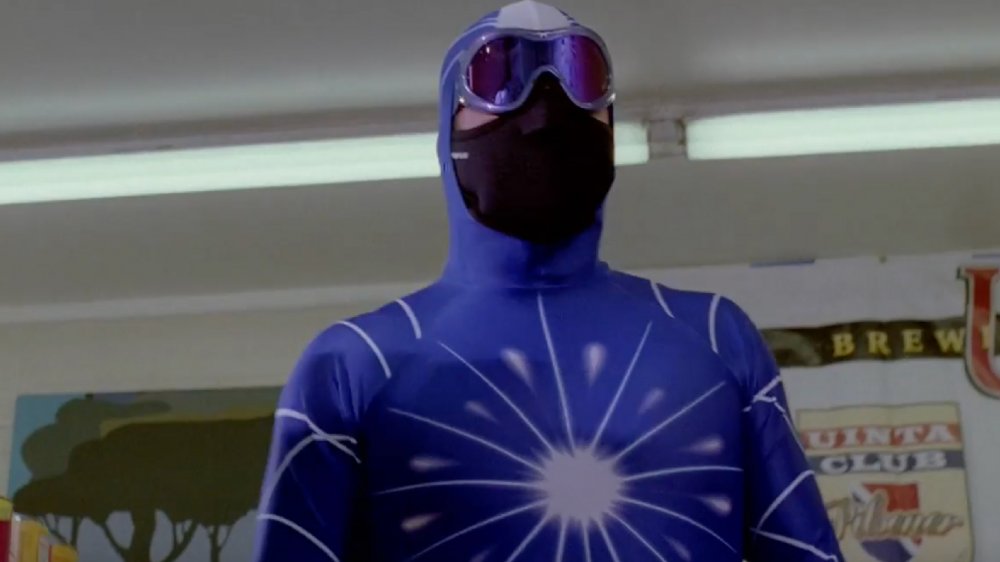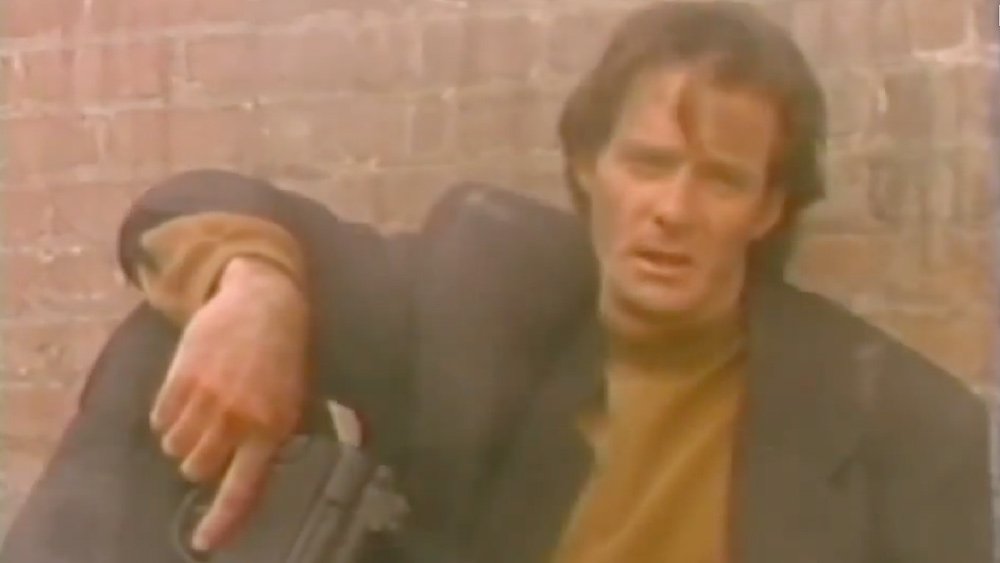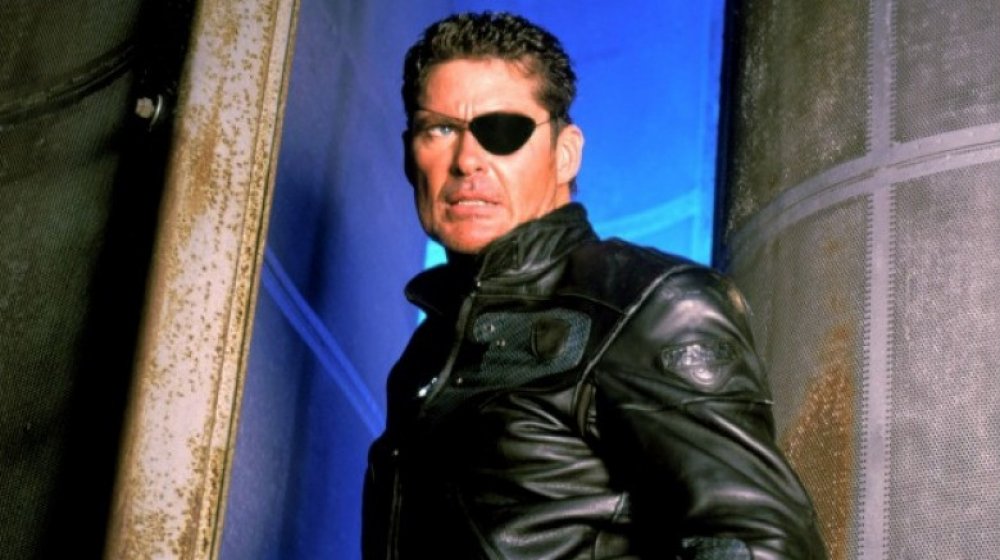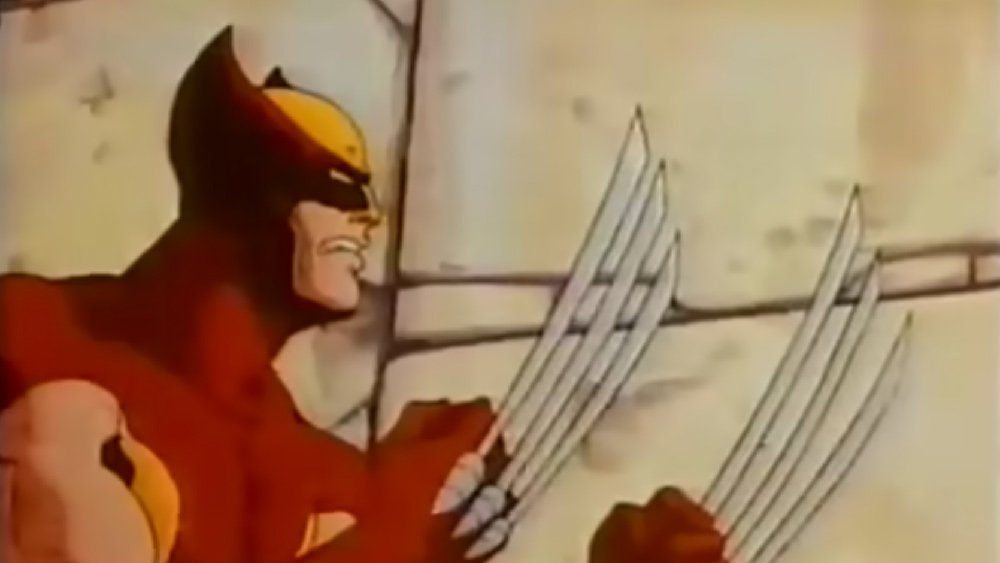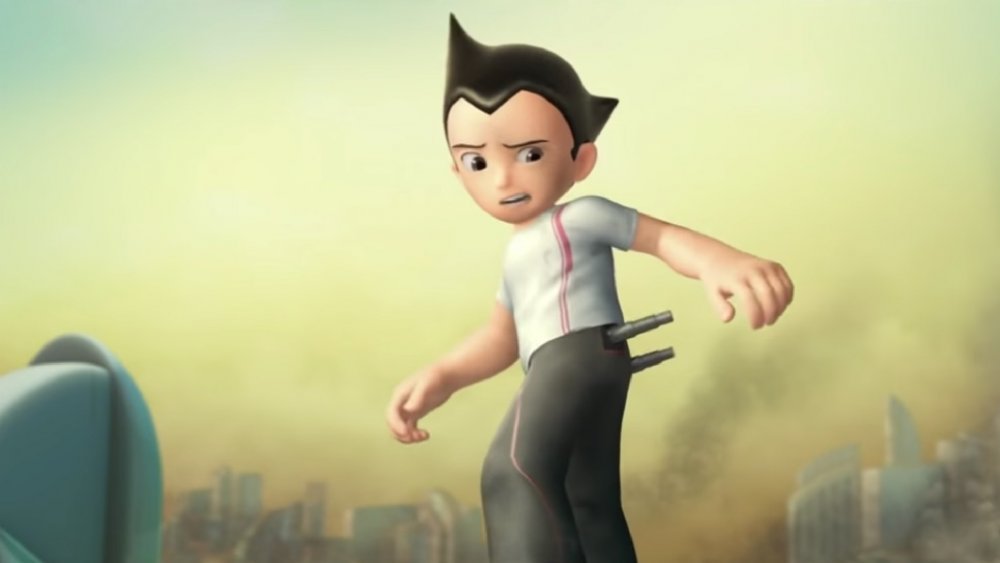Strange Superhero Movies You May Not Know Exist
Superhero movies have become a major staple of modern cinema, yet their road to mainstream popularity wasn't always smooth. Throughout the 1970s, '80s, and '90s, movie and television producers adapted comics titles with varying degrees of success. Superman: The Movie (1978), Tim Burton's Batman (1989), and The Incredible Hulk live-action series (1977-1982) proved superheroes had screen potential, but they were exceptions; most attempts to bring the comics to life either flopped or were met with indifference. Here are a few superhero movies that most people have either forgotten or never knew existed.
Swamp Thing (1982)
Between The Hills Have Eyes (1977) and A Nightmare on Elm Street (1984), horror auteur Wes Craven directed Swamp Thing, a film adaptation of DC Comics' horror series of the same name. In it, scientist Alec Holland (Ray Wise) is transformed into Swamp Thing (Dick Durock) after soldiers working for the evil Anton Arcane (Louis Jourdan) attack his laboratory in the Louisiana bayou. Despite the source material and Craven at the helm, the results were too corny to be appropriately horrific. The action scenes are poorly handled and the special effects, even for the early 1980s, aren't much to look at: Swamp Thing and the monster he fights during the climax resemble rejects from the Power Rangers. The movie's only saving grace is B-movie queen Adrienne Barbeau in the romantic lead — a casting choice no doubt appreciated by many 16-year-old guys in the audience circa 1982.
The Return of Swamp Thing (1989)
How do you follow up a bad superhero movie from the early 1980s? With a bad sequel in the late 1980s! In The Return of Swamp Thing, everyone's favorite scientist turned walking lily pad must again defeat his nemesis Anton Arcane, who somehow survived being turned into ManBearPig in the first movie. The only positive thing to say about The Return of Swamp Thing is that the costume looks better. Heather Locklear gives one of the most insufferable performances of her career as the new lady in the creature's life, Abigail Arcane, and her work is eclipsed only by some the worst child actors this side of The Phantom Menace. This sequel doesn't even approach horror film territory, although it did spawn one of the most cringeworthy public service announcements in human history.
Fantastic Four (1994)
A decade before 20th Century Fox made its first Fantastic Four movie, legendary B-movie producer Roger Corman developed his own adaptation. Why haven't you seen it? Probably because the movie was never officially released, either in theaters or on video; in fact, it was only made to retain the Constantin studio's rights to the Fantastic Four before they expired. The budget was approximately $1 million, resulting in special effects straight out of a made-for-TV movie from the 1970s. (The Human Torch visuals during the film's climax are particularly poor.) The filmmakers must have completely run out of money before they completed dubbing, since it's difficult to understand anything Doctor Doom says. Despite all this, it's arguably the most watchable Fantastic Four movie to date, simply because it's unpretentious.
The Shadow (1994)
For the uninitiated, The Shadow was a pulp character from the 1930s best known as the star of a series of popular radio dramas. The late Orson Welles, director of Citizen Kane, lent his vocal talents to these broadcasts. In the 1994 movie version, Alec Baldwin plays Lamont Cranston, a rich New York playboy who uses his alter ego the Shadow — and a handful of mystical powers, including invisibility — to fight crime. The movie does a fine job of capturing its 1930s setting and honors the dark source material; unfortunately, the story, about a descendant of Genghis Khan determined to detonate an atomic bomb, is unremarkable. Universal, the studio behind The Shadow, wanted a superhero franchise, but the premise doesn't really lend itself to that formula. Plus, just as Disney later learned with John Carter, there isn't a large built-in audience for a property created before most Americans owned televisions.
The Phantom (1996)
Based on the classic comic strip of the same name, 1996's The Phantom stars Billy Zane as Kit Walker, a wealthy playboy in 1930s New York City who secretly fights crime as the titular hero. (Are you noticing a pattern here? Rich playboys have too much time on their hands.) The mantle of the Phantom is passed from father to son, and Kit is the latest incarnation. The filmmakers' goal with this movie was seemingly to recreate the action serials of the early 20th century, and in that regard it succeeds, but the idea was fundamentally misguided. Sure, the Indiana Jones movies pulled it off, but director Steven Spielberg updated the material for modern audiences in several important respects, whereas The Phantom is just as cheesy as those original serials. Plus, let's just be honest, it's hard to take a hero seriously while he's running around in a goofy purple costume — and the stock plot, which hardly bears describing, involves a villain trying to find an ancient relic to unlock supernatural powers. If you're daring enough to watch The Phantom, look for an early performance from Catherine Zeta-Jones as the villain's female sidekick.
Doctor Strange (1978 movie)
Decades before making his big-screen debut, Marvel's Doctor Strange starred in a made-for-TV movie aired by CBS in 1978. Intended as a pilot for a television series that was later abandoned by the network, it tells Strange's (Peter Hooten) origin story as a medical doctor turned sorcerer extraordinaire. The movie feels like a lot of comic book-to-television adaptations of the era, such as The Incredible Hulk series: the special effects are dated, the costumes look like someone raided a circus performer's wardrobe, and most of the scenes were obviously shot on CBS backlot sound stages. You can't really fault the movie for any of this, but needless to say, Benedict Cumberbatch doesn't exactly have big shoes to fill with his Doctor Strange. One notable thing about the 1978 Strange: a young, foxy Jessica Walter (best known as Lucille Bluth from Arrested Development) portrays the villain, Morgan Le Fay.
The Punisher (1989)
Do you have an urge to watch a cheesy action movie in which Dolph Lundgren murders dozens of Yakuza gang members? (Okay, other than Showdown in Little Tokyo?) Then the 1989 adaptation of Marvel Comics' The Punisher is your best bet. Lundgren plays Frank Castle, a grieving cop who takes revenge on organized crime for his family's death by driving his motorcycle from one action set piece to the next. The greatest fight in the film, however, may be Lundgren's struggle with the English language, followed closely by the internal conflicts that must have been suffered by his co-star, former Academy Award winner Louis Gossett Jr. If it wasn't called The Punisher, this would be virtually indistinguishable from dozens of other 1980s action movies. Just watch any Death Wish sequel instead and you'll get the idea.
Darkman (1990)
Before Liam Neeson had most of his family taken by vaguely European criminals, he starred in Darkman — which, unlike most movies on this list, was an original screenplay instead of a comics adaptation. Neeson portrays scientist Peyton Westlake, whose life is forever altered after he's attacked by ruthless mobsters and left horribly scarred. Conveniently enough for revenge purposes, he is now also resistant to pain and stronger than before. Westlake takes on the role of Darkman and uses his new abilities, combined with synthetic skin of his own invention, to pay back those who wronged him. Sam Raimi, director of the Evil Dead and original Spider-Man movies, co-wrote and directed Darkman, and it contains many hallmarks of his work, including slapstick humor and over-the-top action. The first movie was successful and spawned two less-regarded sequels starring Imhotep himself, Arnold Vosloo. Raimi fans may want to check out the first movie — and watch for a cameo by Bruce Campbell near the end.
Captain America (1990)
The 1990 adaptation of Captain America was meant to be a major theatrical release, but instead it went straight to video. Why? Because it's horrible. The story tells the familiar tale of would-be soldier Steve Rogers taking a special serum, becoming superhero Captain America, and going on to fight his Nazi nemesis the Red Skull. Aside from the obviously low budget, the film's greatest flaw is the casting of Matt Salinger as a thoroughly uncharismatic Captain America. As his surname suggests, Salinger is the son of the late J.D. Salinger, author of The Catcher in the Rye, and watching just a few minutes is enough to make you wonder whether his heritage was the only reason he got the role. Aside from throwing his shield and staring blankly at people, Salinger's Captain America holds a unique superpower: the ability to feign sickness to commandeer cars. What a hero!
Condorman (1981)
Condorman was Disney's attempt to capitalize on the success on Superman: The Movie (1978). In it, Woodrow "Woody" Wilkins (Michael Crawford) is a comic book artist who decides to become a real-world version of his creation. His intentions come to the attention of the CIA, and the agency recruits Wilkins for a mission to save a beautiful KGB agent (Barbara Carrera) who plans to defect to the United States, even — in a bid to waste taxpayer's money — building Wilkins his own Condorman-themed car and boat. More of a James Bond parody than a traditional superhero film, Condorman is dated and brimming with over-the-top cheese, yet it's hard to fault it since the movie is aimed at kids. Many children of the 1980s have fond memories of watching Condorman on a rainy Saturday afternoon, and given the cash Disney's made on the Marvel movies, you shouldn't be surprised to see a remake at some point in the future.
Captain America and Captain America 2: Death Too Soon (both 1979)
Captain America and Captain America 2: Death Too Soon were made-for-television movies premiering on CBS in 1979, both starring B-movie action king Reb Brown as Captain America. Someone on the production clearly thought that motorcycles were the "in" thing in 1979, as Captain America wears a motorcycle helmet (with white wings!) in both movies and much of the action is motorcycle-centric. Cap's bike even has a hang glider! As with other TV adaptations of the era, the limitations of the budget are clearly evident, particularly in the case of Captain America's shield, which looks like it was made out flimsy clear plastic. The second movie is the best of the two, because Christopher Lee plays the villain — and even when he's in a subpar project, Saruman brings his A-game.
Various Spider-Man 1970s Movies
Spider-Man was the star of several made-for-TV movies in the late 1970s, including Spider-Man (1977), Spider-Man Strikes Back (1978), and Spider-Man: The Dragon's Challenge (1979). The first was the pilot for the Amazing Spider-Man television series that aired on CBS during that time period, while the second and third were two-part episodes edited together into feature-length films. The movies and the series all share similar elements, including a Spider-Man costume that looks like something you could find at a Spirit Halloween store and scenes that look like a fan film shot without permits. Sometimes it's hard to tell whether you're watching a Spider-Man movie or the beginning of an adult XXX Spider-parody.
Ninjak vs. the Valiant Universe (2018)
If you're not familiar with the superheroes of Valiant Comics, all you really need to know is that while many publishers attempt to find success by combining two awesome things into one new character, Valiant actually does it well. X-O Manowar, for instance, is essentially "what if Conan the Barbarian had a suit of Iron Man armor?" Bloodshot is "what if Arnold from Predator was also Arnold from Terminator?" And Ninjak? He's "what if Batman was James Bond," which rules exactly as much as it sounds like it would.
In 2018, Valiant decided to try another one of those crazy combinations: "what if these comic books were also a live action movie?" Originally released as a web series a few years earlier, Ninjak vs. the Valiant Universe did exactly what it says, pitting Colin King, the 11th ninja to freelance for MI-6 (he's "Ninja K," get it?) against a live-action version of his entire comic book universe. Unlike a lot of the obscure flicks on this list, this one's actually worth watching, if only because of its intriguing cast. Pro wrestler John Hennigan (better known to WWE fans as John Morrison) plays the Eternal Warrior, and Bloodshot — portrayed in his 2020 film outing by Vin Diesel — is played by former Power Ranger Jason David Frank.
Man-Thing (2005)
Even though they've evolved into very different takes on a similar idea, the debate over which swamp monster is a better character has been raging ever since DC's Swamp Thing and Marvel's Man-Thing made their first appearances within three months of each other in 1971. When it comes to their adventures outside of comics, though, there's no question about who got the better end of the deal. Swamp Thing has starred in a live-action TV series, a cartoon for kids, two movies, and a streaming series that, while short-lived, was extremely well-received.
Man-Thing had a movie that made 3 percent of its budget in its international theatrical release, went straight to cable in America, and is primarily remembered for a cast of Australian actors trying to do Louisiana accents with what could charitably be called varying degrees of success.
It does have a few good points, though. Man-Thing himself has a pretty cool design, especially when your expectations are adjusted for a low-budget SyFy Original from 15 years ago. Unfortunately, all of the weirdness that makes Man-Thing so interesting in the comics — the part where he guards the interdimensional Nexus of All Realities, and his signature power to burn the flesh of those who fear him — are ditched in favor of a fairly generic slasher where Man-Thing's ostensibly the bad guy. It does, however, have the benefit of having a 97-minute runtime, which means that we can actually have the cheap laughs of referring to it as "a full-length Man-Thing."
The Spirit (2008)
There have actually been two movies based on The Spirit, Will Eisner's groundbreaking Golden Age comic strip that's known for redefining what you could do on the page. The first was a 1987 TV movie starring Sam J. Jones, whose previous comic strip adaptation, Flash Gordon, became a cult classic thanks largely to its lavish campiness and killer soundtrack by Queen. It was meant as the pilot of a TV series, but it failed to get the ratings that were needed to convince anyone that a full series would be a good idea.
The 2008 Spirit film, on the other hand, failed at literally everything. It was written directed by Frank Miller and starred Gabriel Macht in the title role opposite Samuel L. Jackson as his arch-nemesis, the Octopus. If Miller's name sounds familiar it's because he's the groundbreaking comics creator responsible for The Dark Knight Returns and writing Batman: Year One, two of the most highly regarded Batman comics of all time, which serve as proof that talent in one medium does not translate to talent in another. Miller approached The Spirit the same way that he and Robert Rodriguez had approached their movie adaptation of Miller's own over-the-top noir comic, Sin City, right down to the high-contrast visuals, ridiculous "hard-boiled" dialogue, and goofy comedy violence that's best embodied by the fight scene that includes the Spirit getting clocked with a toilet. The problem — well, one of them — was that the only thing Eisner's style and Miller's style had in common was that they were both technically comic books.
The end result was a film that is arguably the single worst comic book adaptation of all time — yes, even worse than whatever you're thinking of. It makes Corman's Fantastic Four look like Captain America: Civil War, and makes Batman & Robin look like Citizen Kane. It tanked at the box office, and while Hollywood's ways are very mysterious, it's probably not a coincidence that Macht hasn't done much movie work since.
Dracula: Sovereign of the Damned (1980)
You might not think of Dracula as a mainstay of Marvel Comics, but the Lord of All Vampires has been a major character at the House of Ideas for decades. After the Comics Code Authority loosened its restrictions on the supernatural in the '70s, he showed up to hassle the X-Men, duke it out with Doctor Strange, and he even starred in one of the company's most successful horror comics. Tomb of Dracula ran for a full 70 issues, and introduced the world to a vampire hunter named Blade.
Eighteen years before that guy got his movie, though, Marvel's Dracula starred in his very own anime, produced by Toei, the same company that would later put out One Piece, Digimon, and the current run of Sailor Moon. It was released stateside as Dracula: Sovereign of the Damned, and in a lot of ways, it's exactly as weird as you'd expect a 1980 anime adaptation of a 1970s Marvel Comics adaptation of an 1897 gothic horror novel to be. The best part is when the police are tracking down Dracula by pinpointing the locations of his exsanguinated victims, only to find that they can connect them to form... a bat. What, was having them spell his full name in cursive too subtle?
Generation X (1996)
No comics franchise embodies the '90s as much as the X-Men, the mutant heroes who dominated that decade with massive comic book sales and an endless supply of pop culture tie-ins. At its height, there were about 17 X-Related comics hitting the shelves every month, and the one that best captured the spirit of the era was probably Generation X. As its name implies, it was focused on a group of younger mutants, led by established fan favorite Jubilee, who formed the new class of disaffected teenagers at the Xavier School. Based on that description, it probably seems like the perfect franchise to adapt into a movie, even one that was meant as a TV pilot.
It probably would've been, too, if the Gen X movie had happened under literally any other circumstances, but pretty much everything was stacked against it. For one thing, its release coincided with the collapse of the comics industry — Marvel would file for bankruptcy by the end of the year — and while the Generation X comics were very good and had dedicated fans, it was a very different time to be launching a TV series than when the X-Men animated series started in 1992. Even if it had lured in the comics audience, there were choices made that seemed designed to alienate fans, like casting a white actress to play Jubilee, one of Marvel's most prominent Asian-American characters. Also, instead of using an established supervillain — which, as you may know, Marvel has quite a few of laying around — former Max Headroom actor Matt Frewer played a generic weirdo mad scientist trying to take over dreams.
Oh, also it was extremely bad. In addition to looking like it was filmed entirely in a laser tag arena with sets made of cardboard, the effects were terrible even by the standards of a TV movie on Fox in 1996, and the acting seemed like the filmmakers had maybe heard of the concept of a second take, but didn't really believe in it themselves. Here's hoping that Gen X's predecessor, New Mutants, has better luck when its movie adaptation comes out... assuming it ever does.
Justice League of America (1997)
Hey, wait a second. Justice League isn't an obscure movie at all! It was a worldwide hit that made over $650 million at the box office, with a cast of heroes that are household names, at the centerpiece of a shared uni — oh, hang on. Right, sorry, this isn't about that one. This is Justice League of America, the unaired-in-America 1997 TV pilot that nobody saw and even fewer people liked. It's hard to understand why, though. It's the Justice League! It has everyone's favorite characters, like Guy Gardner, Ice, and the Martian Manhunter!
Yeah. Rather than using the classic lineup of characters like Superman, Batman, and Wonder Woman, this Justice League was based on the late '80s Justice League International comics, where the team was reimagined as something more like a sitcom, with a roster of third-stringers. And honestly, that's not a bad idea. JLI was the source of some of the best DC comics of its era, and the lower-stakes adventures of characters like Blue Beetle and Booster Gold undoubtedly seemed like they would be easier to produce on a TV budget than marquee characters like Superman. Even the setup for the show seems like it's ahead of its time, intercutting the same kind of first-person "interview" segments with the comedy, the same way that The Office and Parks & Recreation would a decade later.
Sadly, that setup only really works if the writing is good, or funny, or interesting, and Justice League of America's was... not.
Orgazmo (1997)
Not all superhero movies have their roots on the comic book page. Orgazmo, for instance, probably would've had a hard time getting printed by DC or Marvel in 1997, what with the fact that it's about a Mormon missionary who starts acting in adult films to pay for his wedding and then becomes a superhero when he gets a gun that gives people orgasms when he shoots them. That's a pretty far cry from batarangs and kryptonite, even if there are parts of it that would fit right in with Preacher.
The combination of "poking fun at Mormons," "comedy based almost entirely around obscenity" and "an offbeat premise that most people wouldn't come within a mile of" may be filling up a bingo card in your memory. If it is, you won't be surprised to learn that Orgazmo came from Matt Stone and Trey Parker, the creators of South Park, and seemed to be less of a movie and more of a vehicle for jokes that they couldn't even get onto that show. While it's not good in itself — Roger Ebert gave it a half star and wrote that it left him "desperately longing for a reason to laugh" — it did make for a pretty interesting subject of This Movie Is Not Yet Rated, a documentary about MPAA censorship. Being an interesting part of a completely different movie, however, is not what most filmmakers hope for.
The Incredible Hulk Returns (1988)
Believe it or not, the Marvel Cinematic Universe wasn't the first time that two of Marvel's most famous heroes got together for a live-action adventure. That honor, such as it is, goes to The Incredible Hulk Returns, a 1988 TV movie in which... the Incredible Hulk... returns. Honestly, if they were going to give it a title that was that on the nose, they should've gone with Hulk and Thor Beat Up Some Random Jerks.
Released in 1988 as a continuation of the Bill Bixby/Lou Ferrigno Incredible Hulk TV show, this TV movie was like a classic comic book team-up between the Hulk and the god of thunder, but Thor: Ragnarok, this ain't. If nothing else, it has exactly the special effects that you'd expect from a show where the main technical achievement was finding a large man, giving him a pair of jorts, and painting him green. Like the comics, Thor had been cast out of Asgard and mystically bonded with Don Blake, but in this version, Blake didn't turn into Thor. He just sort of stood around providing play-by-play commentary while Thor hit things, presumably because someone wanted Thor and Blake to interact with each other and forge a buddy comedy dynamic they could use to sell a Thor TV show. Needless to say, Thor never happened.
Trial of the Incredible Hulk (1989)
If The Incredible Hulk Returns had a title that was a little too accurate, its sequel had one that was an outright lie. Not only did Trial of the Incredible Hulk not feature the Hulk being put on trial, it didn't feature any trial at all. There is a single courtroom scene when Bruce Banner flips out and turns into his alter ego — and throws a chair at a jury box featuring Stan Lee in his first ever Marvel movie cameo — that happens in a dream sequence.
What it does have, in keeping with its legal themes, is a team-up with blind lawyer and part-time super-ninja vigilante Matt Murdock that was meant to be a backdoor pilot for a Daredevil series. While that never happened, there actually is some fun Daredevil stuff in here, including the casting of Gimli himself, John Rhys-Davies, as the Kingpin. And yes, like the 2015 Daredevil series, this one does feature a hallway fight. It's... not quite as brutal as the one on Netflix, though.
Lightspeed (2006)
MCU fans will undoubtedly know Stan Lee as the friendly face of the Marvel Universe, the guy who co-created Spider-Man, the X-Men, and the Avengers, and left behind a towering legacy in pop culture. Listen: all of that is true. Stan the Man's later career, however, was marked by less of the creative explosions that gave the world Marvel Comics, and more by projects that tried to get attention by plugging his name into the title with varying degrees of involvement from the guy himself.
Case in point: 2006's Lightspeed, which joins Nightcat, Ravage 2099, and Stripperella under the heading of Stan's "lesser creations." The premise is an architectural marvel constructed entirely from clichés: guy named Daniel Light gets speed powers, becomes a costumed hero even though said powers might be bad for him, and fights a big python-man named Python. It's not even interesting in its badness, except for the true hilarity of the difference in how Lightspeed looks on its straight-to-video box art and the way the costume looks in the actual movie. Whoever was in charge of the box was definitely taking a few liberties.
Firearm (1993)
If you ever wonder how hot comics were in the early '90s, consider this: back then, live-action superhero movies were produced in order to promote comics, rather than the other way around. Well, one was, anyway: 1993's Firearm, released exclusively on a VHS tape that came with the #0 issue of the comic of the same name.
Okay, "movie" might be pushing it. This thing clocks in at just over half an hour if you count the two-minute promo for the rest of the Ultraverse comics that's also on the tape. While the movie is of the quality you expect from a low-budget VHS short film that came bagged with a comic about a character you've almost certainly never heard of, the comic itself wasn't bad, for its abbreviated run. Both the film and the comic were written by James Robinson, who would go on to write the comic Starman, which is fondly remembered as a true classic of its era, and the movie adaptation of League of Extraordinary Gentlemen, which is... not.
Nick Fury: Agent of S.H.I.E.L.D. (1998)
Take a moment, if you will, and imagine the Nick Fury of the Marvel Cinematic Universe. The cool, no-nonsense super-spy who stepped out of the shadows in 2008 to let us know that there was more to Iron Man's world than just Tony Stark. The stern commander who brought the team together in The Avengers. The tough-as-nails badass who made a shocking return from the dead in Captain America: Civil War.
Now imagine that instead of Samuel L. Jackson, that same character was played by David Hasselhoff. Yeah, the Knight Rider and Baywatch guy.
It happened, believe it or not, in 1998, in another one of Fox TV's ill-fated attempts to make a TV movie based on a Marvel character in hopes of launching a series. Shockingly, it didn't work, although the movie is at least a little watchable for its ridiculous and occasionally hilarious attempts at, well, everything.
Pryde of the X-Men (1989)
Before they hit gold with the successful X-Men animated show in 1992, there was the first attempt at bringing Marvel's mutants to television: Pryde of the X-Men. At only half an hour, it's less of a movie than just yet another pilot episode for a TV show that never happened, but its straight-to-video release fooled plenty of '90s kids into thinking that there was some lost X-Men movie that we'd just never heard of.
We probably would've been better off not hearing about it at all. Despite being based on some of the best X-Men comics ever printed, Pryde crams a whole two hours worth of crappiness into a mere 30 minutes. While it's very interesting to see the X-Men animated in the same '80s Marvel animation style as G.I. Joe, the plot of Magneto trying to kill all the humans by crashing a comet into the Earth is a little too Cobra Commander. The weirdest part? Someone decided that Wolverine, a Canadian superhero who is famous for being Canadian, should be Australian instead.
Astro Boy (2009)
If you don't remember the Astro Boy movie that had a cup of coffee in theaters back in 2009, don't worry. You are most certainly not alone. The movie was a box office bomb that lost a cool $23 million and led directly to its studio, Imagi, going out of business.
That's actually pretty surprising. Astro Boy is one of the most popular manga characters of all time in Japan, and isn't exactly an unknown quantity in America, either. It got decent reviews, too, with Roger Ebert saying it was "better than most of its recent competitors, such as Monsters vs. Aliens and Kung Fu Panda." Throw in a genuinely star-studded cast that included Kristen Bell, Nicolas Cage, and Samuel L. Jackson, among others, and you've got a movie that should've brought people in, but it definitely didn't. Maybe America just isn't ready for a hero with a machine gun that pops out of his butt.
